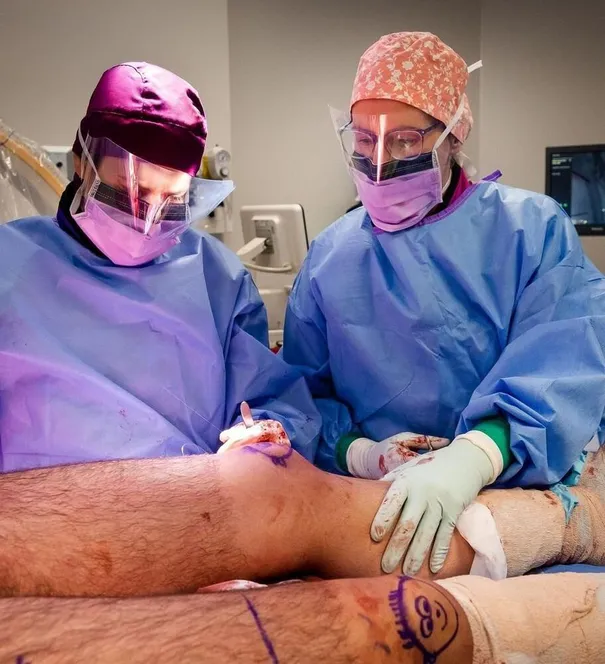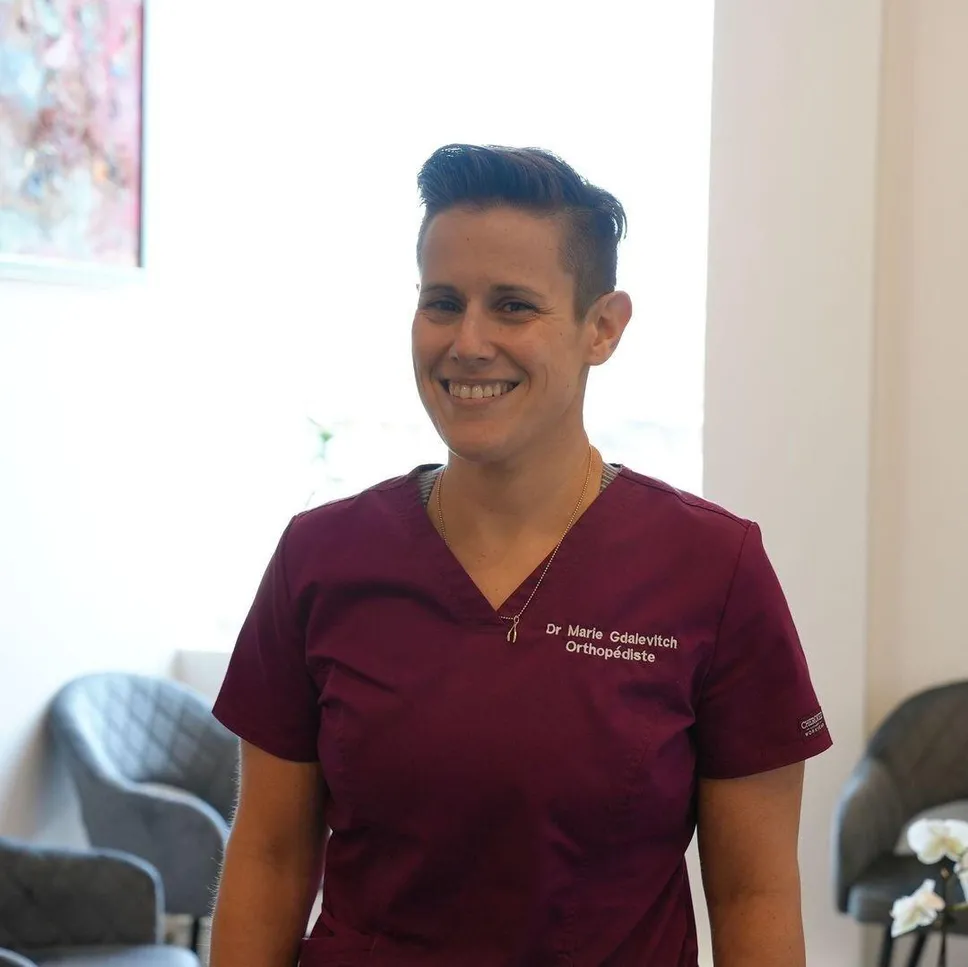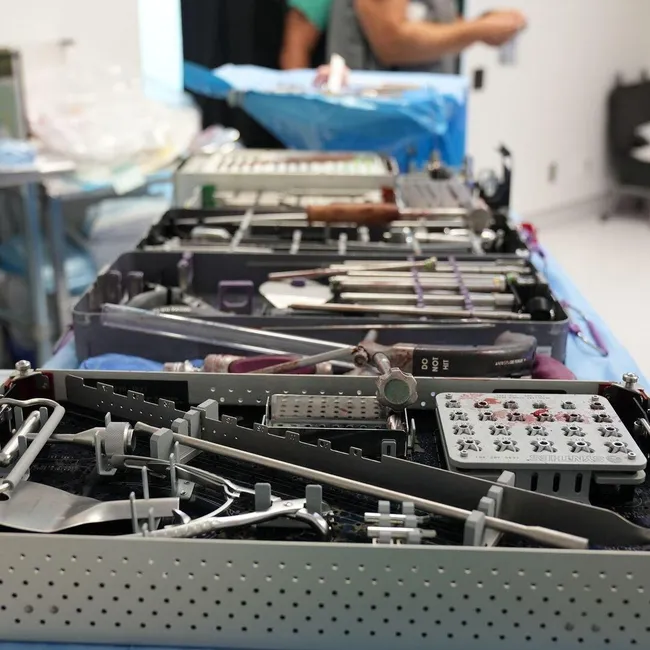
Three weeks ago, John had both of his legs broken — and he paid $85,000 for the privilege.
It’s the price for another three inches of height, according to the Montreal clinic where he got the procedure done. First, they surgically implanted two titanium telescopic rods, or “nails,” into the 26-year-old’s thighs. Then they fractured his femurs.
“At first, it sounded like a really tough task,” said John, who asked the Star not to use his real name. The Ontario-based engineer has kept his procedure a secret from all but his closest friends and family.
“I had fears it would be painful, but (decided) the ends justify the means.”
Over the coming weeks, the nails will slowly extend at a pace of one millimetre a day, stretching John’s thigh bones a maximum of eight centimetres. Once the desired length is achieved, the bone is allowed to heal and the nail removed.
At the moment, John measures a bit over 5’5.” After the rods finish lengthening in about three months, he’ll be 5’9.”
“Actually doing the surgery, it’s been great,” John said. “It wasn’t even painful at all.”
Is it worth the hype?
Cosmetic leg lengthening surgery has surged in popularity, especially among men, around the time the pandemic started, according to doctors in the industry.
While critics have warned against the procedure for its potential risks, advocates say it’s no different from other cosmetic surgeries, like the infamous BBL, or “Brazilian butt lift,” recently crowned the “world’s most dangerous cosmetic surgery” by the Guardian.
Notably, plastic and cosmetic procedures in general have seen a boom in interest in recent years.
Unlike some other cosmetic surgeries, however, limb lengthening can carry “significant functional risks,” said Dr. Anthony Cooper, head of pediatric orthopedics at BC Children’s Hospital.
Because we rely on our legs throughout our daily lives, major complications during surgery or recovery — though rare — can result in potentially life-altering disabilities, he said.
“If something goes wrong, it doesn’t just have a cosmetic risk associated with it,” he said. “It also has a functional, potentially long-term risk associated with it.” Cooper cautioned those interested to seek out reputable surgeons experienced with the procedure.
That being said, the surgery itself is “relatively straightforward and simple to do” with a “pretty low risk” of complications, according to Cooper, who regularly performs the procedure on children born with one leg shorter than the other — its original purpose. He doesn’t offer the surgery for purely cosmetic reasons, he said.
The literature agrees — a 2020 review of 11 different limb-lengthening studies, including 795 patients, concludes: “Overall, the rate of serious major complications was low for cosmetic limb lengthening.” A 2015 study on the PRECICE nail used in John’s surgery recorded either a two or 12 per cent chance of implant failure — like nail breakage — depending on whether one decided to lengthen their thigh or lower leg bones, respectively.
John decided to lengthen his thigh bones, as most people did. Some get both for even more height, doctors say.
“I don’t (want to) have that thought for the rest of my life, that I’m shorter than average,” John said, adding that he’s waited two years for the surgery to become available.
“It’s just for personal fulfilment, just to make me a happier person. From the inside, no one else could have made me (overlook) my height. Physically changing it was the only option.”
Rehab and recovery
John now has a long recovery ahead of him — the most dangerous part of the procedure, Cooper explained.
The PRECICE nails aren’t fully weight-bearing, each only able to support 50 to 75 pounds. Falling and breaking a nail can lead to painful consequences, and often results in having to repeat the surgery, Cooper said.
This can complicate the months of rehab and recovery after surgery. On top of the two to three months of nail lengthening, it usually takes another month to heal for every centimetre gained, Cooper continued.
Throughout this process, patients must balance protecting the nail from damage and undergo regular physiotherapy, Cooper advised, or they might suffer long-term stiffness, pain and joint damage.
On rare occasions during the lengthening process, “the bone doesn’t (heal) as well as it should, in which case you have to slow down,” he said. “Sometimes, it heals too quickly, and you have to redo the cut in the bone.”
On even rarer occasions, a blood clot could form in the legs and get swept into the lungs. This is potentially fatal, Cooper said, though he estimated the risk is “less than one per cent.”
If all goes well, however, patients are good for the long term: “The (newly healed) bone is just as strong and looks exactly the same as the rest of the bone,” Cooper said.
Asked whether he’d recommend the procedure to someone who wanted it, Cooper said: “I don’t have any objections to it. But I think that it’s a very expensive procedure to have done.”
“If it’s within your means, then it’s reasonable,” he added, “but there are some people who remortgage their houses to get this done.”
Canada’s only cosmetic leg surgeon
John’s surgeon, like many others in the north, was Dr. Marie Gdalevitch — currently the only practicing doctor to offer the cosmetic surgery in Canada.
Gdalevitch has been stretching bone for ten years at her clinic, the Montreal-based Canadian Limb Lengthening Center, but only started offering the procedure for purely cosmetic reasons in 2018. Limb lengthening surgeries have existed since the 1950s, she told the Star, and can be a “life-changing” procedure for those with congenital illnesses, injuries and more.
Since she started offering the procedure, Gdalevitch has been overwhelmed with requests from prospective patients. “Business is booming,” she said.
“It’s not that crazy. It’s not a very massive surgery compared to some of the stuff they do in plastics,” Gdalevitch said, adding that her twin sister is a plastic surgeon— “some of the stuff she does, I’m always like, now that’s crazy.”
“I mean, we do break people’s bones. But we’re fixing them at the same time, right?”
All limb-lengthening patients the Star spoke to declined to share their identities for fear of social backlash. According to Gdalevitch and other doctors offering the procedure, many patients choose to keep their surgeries a secret to all but their closest friends and family. Some don’t want anyone to know.
Gdalevitch believes the stigma stems from a “double standard” over cosmetic surgeries for men, though she added that cosmetic surgeries in general are becoming more socially accepted.
She estimates about 90 per cent of her clientele are male, mostly between 5 feet and 5’6” — though some patients have come in at 5’9” .
Gdalevitch said most of her patients “don’t have an issue finding partners,” and are usually “quite successful already in whatever they’re doing.”
“It’s really when they’re in social environments — particularly with men — that they feel like they’re not at the right height group.”
Gdalevitch admitted she was “resistant” to offering the cosmetic surgery at first. “It’s a bit controversial, particularly in Canada,” she said.
“Then I had one family contact me from Vancouver. They had a young adult son that was pretty much depressed and suicidal about (his height), and basically begged me to do it,” she said. “And so I did it.”
Looking back, Gdalevitch reflects that her leg lengthening patients were among the happiest she’s ever had: “They’ll text me months and years after to thank me for doing it.”
Can height be a career decision?
A Calgary-based actor and filmmaker in his early 40s flew to a Las Vegas clinic to have his procedure done in February of last year. By June, the patient we’ll call Michael said he was back to work — and he’s been getting plenty of it.
“I literally have been working almost non-stop even before I was healed from the surgery,” he told the Star under anonymity, fearing potential career repercussions. “Quite frankly, I never have seen so much work come through my door. It’s unreal.”
The previously 5’5” actor felt he was being passed over for roles “right off the get-go” because of his height.
“A handful of years ago, I even had somebody say to me, ‘Oh yeah, you’re too short to be a leading man,’” he said.
“Now, when they see my headshot and resumé come through and they read on there how tall I am, then it’s all of a sudden, ‘wow, let’s invite this guy in.’”
The phenomenon isn’t limited to film — a 2004 study in the Journal of Applied Psychology found taller people are perceived to be more intelligent and powerful. In fact, each inch above average could net someone an extra $789 in annual earnings, the study claims. Another 2015 study found taller children generally scored higher in cognitive and noncognitive tests than their peers.
That being said, Michael and his agent are well aware of the potential stigma of the procedure — it’s why they’ve kept his surgery largely secret, especially when auditioning for roles.
“The unfortunate thing is, everybody loves gossip in the entertainment industry,” he said, “and the problem with my industry is those kinds of headlines stick with you forever.”
“I think with anything in life, you’re going to find critics — and they’re entitled to their opinion,” said Michael. “But (they shouldn’t judge) until they walk a mile in your shoes.”
The future of height surgery
Michael got his legs extended by Dr. Kevin Debiparshad, a Canadian orthopedic surgery specialist currently offering the cosmetic limb lengthening procedure at his Las Vegas clinic, the LimbPlastX Institute.
Starting at $70,000 USD, the Harvard-trained “Dr. D” (as some patients call him) will gladly stretch your femurs by up to three inches. Notably, the price doesn’t include the removal of the nail from inside the leg — that can run you an additional $14,000 USD, according to his website.
“We’re seeing more and more patients, as well as surgeons, getting involved in … lengthening the bone for cosmetic reasons,” he said, explaining how advances in technology have made the procedure much safer and the recovery period far smoother in recent years.
This, coupled with increased public awareness and societal acceptance of cosmetic surgery in general, has contributed to the procedure’s rise in popularity, Debiparshad said.
“I’ve always thought that this procedure would be even more popular (in the future) than it is now,” he said. “I think right now we’re only scratching the surface.”
“As (the surgery) evolves over the next few years … I think that you will see it more widely offered across the world, and I think there’ll be more and more people looking to do it.”
Kicking power
Three years after his height surgery, Scott, a 22-year-old university senior based in Montreal, is feeling great.
He originally had the procedure done to fix a small length difference between his legs. As an athlete, Scott said the discrepancy led to back pains during soccer practice and in his daily life.
“So obviously when I heard about this technique, I was like, well, if I could fix the discrepancy and at the same time get three inches, why not?” he told the Star, asking that his real name not be used for the story as only close family are aware of the surgery.
After Gdalevitch performed Scott’s surgery in July of 2019, he recalled being surprised by how little pain was involved. By January of the following year, Scott could walk without crutches.
“Obviously there was pain. It is still a surgery, a pretty big one,” Scott said. “But the structure, the framework that they have in place in terms of taking care of you afterwards is great.”
For an extra $5,000, Gdalevitch’s clinic provides daily physiotherapy sessions throughout the lengthening process, which Scott opted into.
With daily physical therapy, Scott recovered quickly — almost a year after his surgery, the student was back on the soccer field. Equipped with extra leg room, Scott felt his kicks had more power. He also believed the additional height aided in his role as a goalie.
Overall, Scott said the biggest benefit of the procedure was a boost in confidence.
“Not that I didn’t have any,” he said. “It just gave me more.”
You can read more of the news on source








